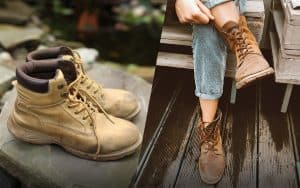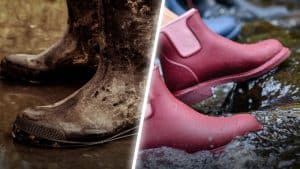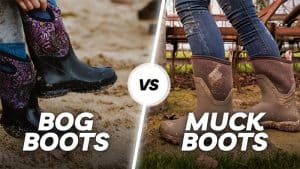Boots are a popular footwear choice for many people due to their versatility, durability, and style. However, like any other item of clothing, boots require proper care and maintenance to keep them looking their best and ensure they last as long as possible. Whether you’ve invested in a high-quality pair of leather boots or love your favorite pair of suede ankle boots, there are steps you can take to keep them looking like new.
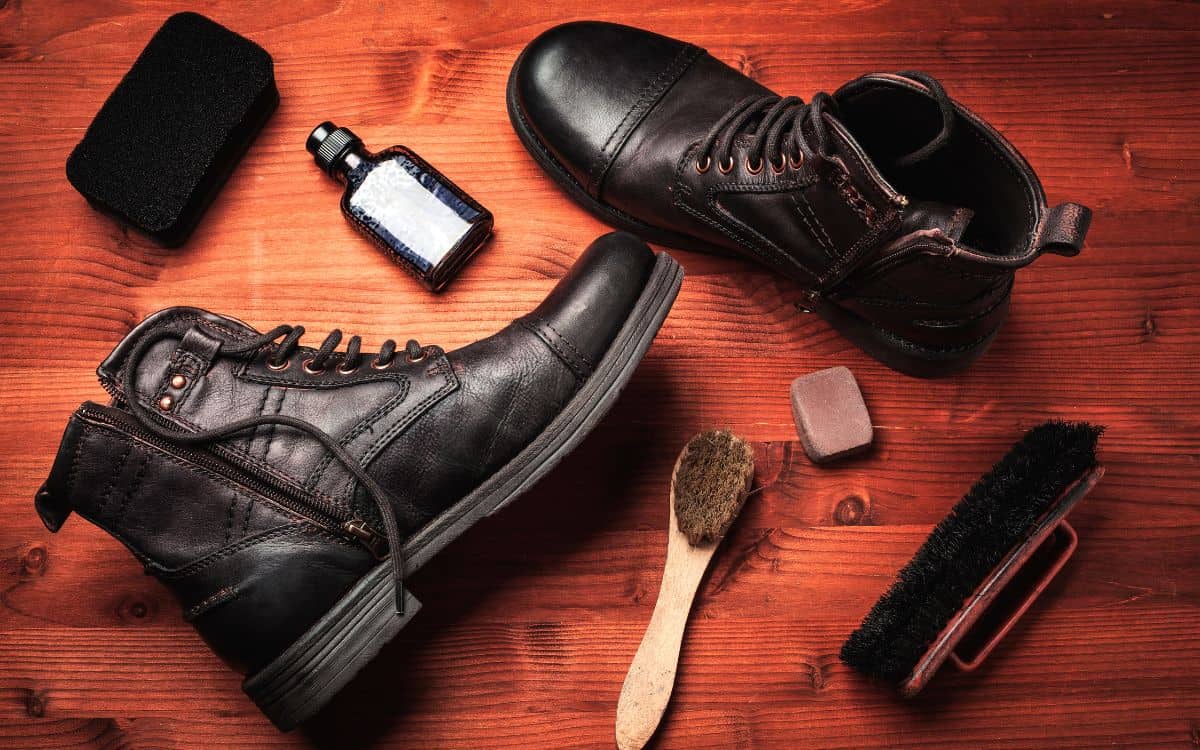
In this blog, we’ll provide a comprehensive guide on boot care, including how to clean and protect different types of boots, store them properly, and troubleshoot common problems. With our tips and tricks, you’ll be able to keep your boots looking great for years to come.
Know Your Boot Material
Knowing your boot material is important because different materials require different cleaning and care techniques. Using the wrong technique can damage your boots or cause them to wear out faster. For example, using water or liquid cleaners on suede or nubuck boots can cause the material to become discolored or damaged. Similarly, using harsh chemicals or abrasive cleaners on leather boots can cause the leather to dry out and crack.
Read the instructions
When caring for your boots, it’s important to follow the manufacturer’s care instructions, which can usually be found on the tag or in the packaging. If you’re unsure about the material of your boots, try to identify it by looking for distinguishing features like texture or pattern. You can also try to find the style name or product code online to learn more about the material and care instructions.
Leather Boots
For leather boots, regular conditioning is important to prevent the leather from drying out and cracking. Leather conditioner helps to keep the leather supple and soft. It’s also important to protect leather boots from water and other liquids, as they can stain the material and cause damage.
Suede and Nubuck Boots
Suede and nubuck boots require a bit more care, as they are more delicate than leather. It’s important to use a suede or nubuck brush to remove any dirt or stains, as using water or liquid cleaners can cause the material to become damaged. You can also use a suede or nubuck cleaner to remove tougher stains.
Synthetic Boots
Synthetic boots are generally easier to care for than natural materials like leather and suede. However, it’s still important to avoid using harsh chemicals or abrasive cleaners, as they can damage the material. Using a mild soap and water is usually sufficient to clean synthetic boots.
Cleaning Your Boots
Keeping your boots clean is important not only for their appearance, but also for their longevity. Regular cleaning can help remove dirt, debris, and stains that can damage the material over time. Here are some tips for cleaning your boots:
Fun Outdoor Quiz
Remove Dirt and Debris
Before cleaning your boots, remove any dirt or debris from the surface using a soft-bristled brush or cloth. Be sure to get into all the crevices and hard-to-reach areas.
Spot Clean Stains
If your boots have any stains, spot clean them using a cleaner specifically designed for the material. Apply the cleaner to a soft cloth and gently rub the stain in a circular motion. Be sure to follow the manufacturer’s instructions and test the cleaner on a small, inconspicuous area first.
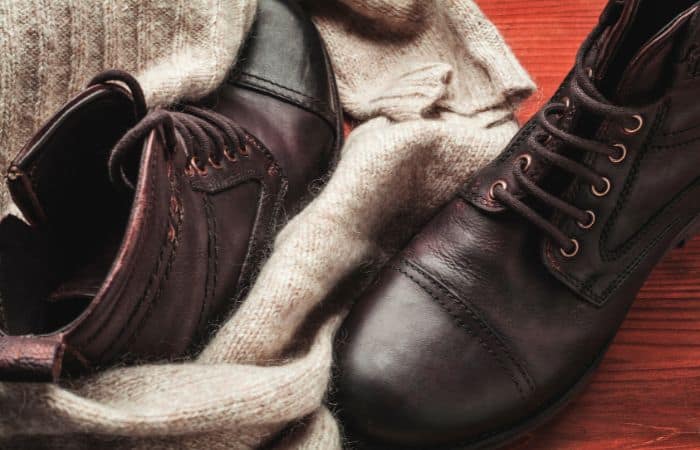
Clean the Entire Boot
After spot cleaning any stains, clean the entire boot using a mild soap and water. Apply the soap to a soft cloth and gently scrub the surface of the boot. Be sure to rinse the soap off with clean water and allow the boots to air dry.
Condition the Material
After cleaning your boots, apply a conditioner to the material to keep it soft and supple. Leather and suede conditioners are available at most shoe stores and online. Apply the conditioner to a soft cloth and rub it into the material in a circular motion. Allow the boots to dry completely before wearing.
Waterproof the Boots
If your boots are made of leather or suede, it’s important to protect them from water and other liquids. Apply a waterproofing spray to the boots after cleaning and conditioning them. Be sure to follow the manufacturer’s instructions and test the spray on a small, inconspicuous area first.
Protecting Your Boots
Protecting your boots is essential to ensure their longevity and to keep them looking like new. Here are some tips for protecting your boots:
Use a Shoe Horn
Using a shoe horn when putting on your boots can help prevent the back of the boot from becoming misshapen or crushed. This is particularly important for taller boots, as the back of the boot can easily fold and crease. A shoe horn helps to guide your foot into the boot without causing any unnecessary friction or pressure. You can find shoe horns at most shoe stores or online.
Store Your Boots Properly
When not in use, it’s important to store your boots in a cool, dry place away from direct sunlight. Direct sunlight can cause fading or discoloration of the material, and storing them in a damp or humid environment can cause mold and mildew growth. To help maintain their shape, consider using boot trees or stuffing the boots with tissue paper. This will also help to absorb any moisture from the inside of the boot.
Avoid Wearing Your Boots in Harsh Weather Conditions
Harsh weather conditions like rain, snow, and extreme heat can damage your boots. If you must wear your boots in these conditions, be sure to protect them with a waterproofing spray. Allow the boots to dry completely before wearing again to prevent any damage to the material. If your boots do get wet, stuff them with newspaper or a dry cloth to help absorb the moisture and prevent any warping or damage to the shape of the boot.
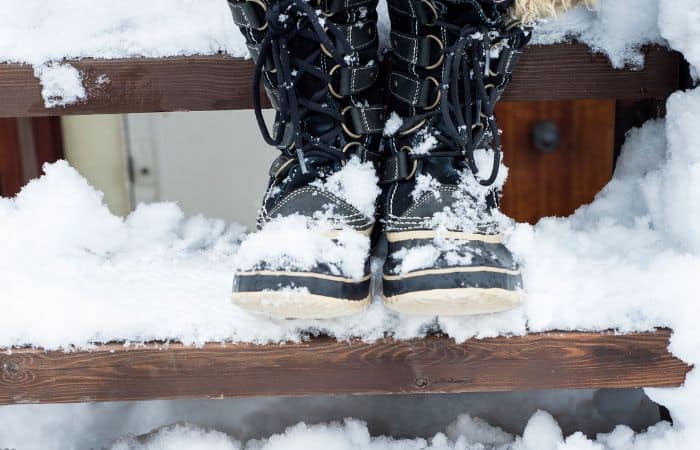
Rotate Your Boots
Wearing the same pair of boots every day can cause them to wear out more quickly. Consider rotating your boots with another pair to extend their lifespan. This also allows each pair to rest and dry out between wears, preventing any buildup of moisture or odor.
Apply a Protective Spray
Applying a protective spray to your boots can help repel water, dirt, and stains. These sprays are available for different types of boot materials and can be found at most shoe stores and online. Be sure to follow the manufacturer’s instructions and test the spray on a small, inconspicuous area first. You may need to reapply the spray every few months or after cleaning your boots to maintain their protection.
Storing Your Boots
Properly storing your boots when they’re not in use is crucial to maintaining their shape and condition. Here are some tips for storing your boots:
Clean and Dry Your Boots
Before storing your boots, make sure they’re clean and dry. If there is any dirt or moisture left on the boots, it can lead to mold growth or damage the material.
Stuff Your Boots
To help maintain the shape of your boots, stuff them with newspaper, tissue paper, or a boot tree. This will help prevent the boots from collapsing and creasing, especially if they’re tall or made of a soft material.
Store Your Boots in A Cool, Dry Place
Avoid storing your boots in a damp or humid environment, as this can cause mold and mildew growth. Instead, choose a cool, dry place such as a closet or shoe rack.
Avoid Direct Sunlight
Direct sunlight can fade or discolor the material of your boots. Store them in a place that is away from direct sunlight.
Consider Using a Boot Bag
If you need to store your boots for a long period of time, consider using a boot bag. A boot bag provides extra protection against dust and sunlight, and can help prevent scratches and scuffs.
Conclusion
Taking care of your boots is not only important for their appearance but also for their longevity. By following the steps outlined in this blog, you can maintain the condition of your boots and save money in the long run by not having to constantly replace them. Remember to always check the care instructions for your specific type of boot material, invest in quality cleaning and protection products, and store your boots properly when not in use. With a little bit of effort, you can keep your boots looking like new and enjoy wearing them for many seasons to come.



